

|
|
|
||||||||
|
|
|||||||||
| Home | Forums | Register | Gallery | FAQ | Calendar |
| Retailers | Community | News/Info | International Retailers | IRC | Today's Posts |
 |
|
|
Thread Tools |
|
|
#1 |
|
Bioshot BB Review and Comparison (.36, .40, .43)
Introduction
Several weeks ago, I was approached by John (aka Stealth) from Airsoft Store Canada and he offered me an opportunity to do a review of the new Bioshots heavy weights that were, at the time, not yet released to the public. Naturally, I was delighted to accept the opportunity. Over the years, local fields have been transitioning over the biodegradable bb's but I find that there is a gap in the market in that department: There was difficulty finding quality heavy weight (over .30 g) bb's that are also biodegradable. As a new sniper, this is very frustrating since everyone knows that one key ingredient to good range and accuracy is the quality and weight of the bb, and I need every advantage I can get. Limited to bio bb's that are .30 g and below, a sniper's potential might be restricted. Being able to test out these new heavy weights was a golden opportunity for me to find the bb that's right for my sniping career. Outlined below are the series of tests that I designed to test the selected bio bb's that are currently on the market. It is important to remember that these tests are not meant to be read at face value, but rather used to compare with one another. That is to say, do not try to make sense of the actual numbers, but notice how the numbers vary when going from one bb to another. This should tell you how good a bb is when compared with the other bb's in this review. The Nasty Stuff (Math warning!) If you've seen my other review comparing KSC and BB Bastards, you'd know that I compared accuracy by looking at their grouping size. This time around, I wanted something that is a bit more meaningful. Comparing grouping size is straightforward and intuitive but it only tells you specifically about those few shots that are taken; it is a small sample of a much larger population of bb's. After the data has been gathered, there must be a useful way to make sense of it. Now, I am not a Math major or expert, but after some research and careful reading, I found some useful tools: Standard deviation - A measurement of how much data points deviate from the expected value. The smaller this value is, the more consistent the data is. For something like the bb's weight, we want this value to be as low as possible so that the weight is more consistent. Furthermore, I used standard deviation of the sample to predict what the entire population of bb's would be like based on the samples I tested with. See this Wikipedia page for more details: http://en.wikipedia.org/wiki/Standard_deviation Circular Error Probable - Or CEP, is a case of circular bivariate normal distribution with a specific set of parameters, used in military science to determine the accuracy of a munition. Simply speaking, it is the radius of the circle in which an ammo is expected to land 50% of the time. There are 90% and 95% variants of this, denoted as P(90) and P(95), respectively, in this review. We want this value to be as small as possible. The smaller this value is, the "tighter" the grouping. The RAND method for CEP estimation - See this paper written by Charles and Paul McMillan for details: http://www.statshooting.com/papers/m...millan2008.pdf After the shooting tests, I mark each point on the target that I believe to be a bb hit with an "X". From there, I measure its position from the bottom left corner of the target, giving it a coordinate in "(x,y)" format. These coordinates are then later used to create a scatter plot in Excel, and to calculate standard deviations and CEP.  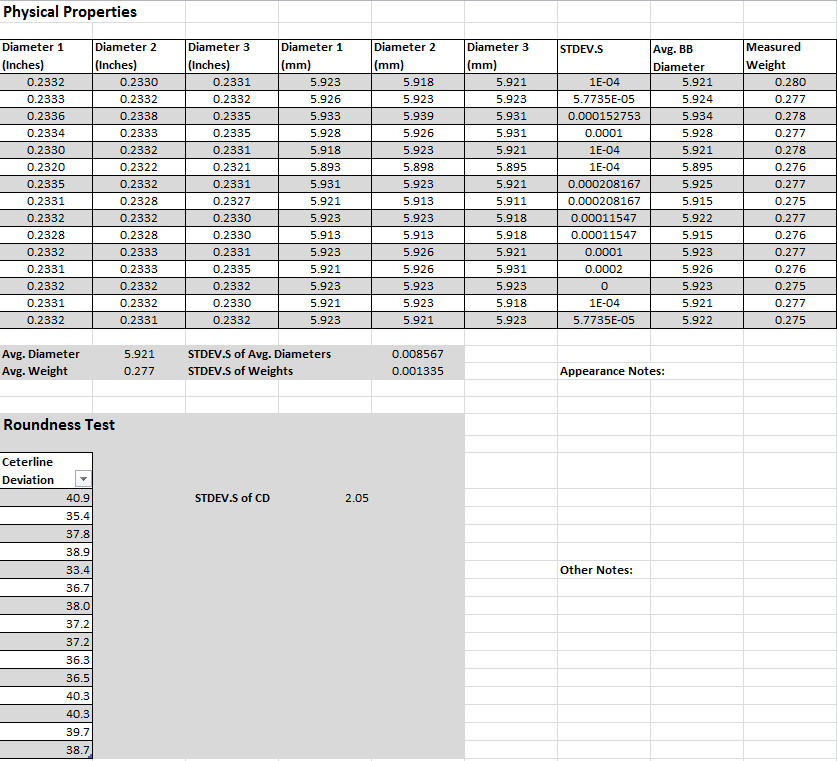 Assumptions and Errors! I make a lot of assumptions in these calculations. There are simply too many variables in the airsoft world and I do not have access to many sophisticated testing equipment. Many variables are simply too difficult to measure. That is why the results should not be taken in at face value. Some assumptions I have made to perform these calculations are, but not limited to that, listed here: - shooter error / sway is minimal: I am the shooter and I had taken on the responsibility of not rushing any single shot. Each shot was taken at the bottom of my breathing cycle. No part of my body was under tension or stress. - all data is that of a normal (Gaussian) distribution: That is, the data more or less populate around the expected value. ie. Most shots are expected the land near the point of aim, with decreasing concentration of shots as you move further away. - ellipticity of the shots are between values of 1 and 4: A requirement for the RAND method of estimation used in this review. Test data seems to fit into this requirement. - there is negligible or no correlation between horizontal and vertical positions of bb hits. - wind: This is a factor in the outdoor test. I suspect it may have skewed the results a bit, that is why I want to focus more on the indoor test. In the indoor facility, there was a ventilation fan running about 2 stories high on the ceiling, directly above the bb's flight-path, but it could not be felt and even if it did have an effect on the bb, I assume that it would have the same and equal effect on all subjects in the indoor test. For this reason, I have chosen to ignore it. - shot counting: Sometimes when the shots land too closely together, it becomes difficult to discern one shot from another. I do my best to determine this by careful studying of the hole it makes on the target. Paper tends to rip a certain way when a bb hits it. However, I would not be able to tell if a bb went through the same hole multiple times. Some data points / shot counts might be lost that way. Also, the position of the actual hit is estimated by the shape of the tear/hole. - Flyers: All my targets are A4 size. I only take into account of what I can count on the pieces of paper. The bb's that land outside of the A4 paper, will be ignored. This will somewhat skew the results, as it can mislead someone to think that a bb is good if the hits observed on the paper is closely grouped together, when in fact there are multiple flyers that would significantly increase the CEP, P(90), and P(95) values. For this reason, I score the bb's with the most recorded hits higher. If you do not agree with the assumptions that I have made here or believe that the errors are too great to ignore, do not read on. The review will be of little value to you. The Gun The gun that I used was the Well MB08 which is a bolt-action Maruzen L96 clone. I do not claim it to be the best or even a very good sniper rifle, but I feel this is the most consistent platform that I have and it may very well resemble what some users, who are reading this now, might use. Upgrades include: - PDI 6.05 mm x 495 mm AEG inner barrel - PDI Type 96 Hop-Up Chamber - Extended hop-up window - Concave hop-up patch - Foam nub for hop-up patch - PDI v-Trigger - PDI Palsonite Cylinder Set HD - PDI Barrel Spacer (8.55 mm dia.) - PDI APS240 Spring - 3/16" Sorbothane pad and neoprene pad installed - Custom LRB spacers, approximately 2.5 mm offset at the muzzle. Additional spacer made with hockey tape, installed in front of the hop-up, to keep the PDI spacer from moving and provide extra support. The gun shoots an equivalent of just under 500 fps with .20 g when testing with .30 g.    Most hardcore snipers at this point might decide to go with the Top Dead Centre (TDC) mod, but I decided to keep the dual-arm design. I have not thoroughly tested this, and I am not certain if this improves or worsens accuracy. The arms have been shimmed so that they do not move laterally. The adjustment set-screws have been shortened to give a greater range of adjustment (not shown in this picture). 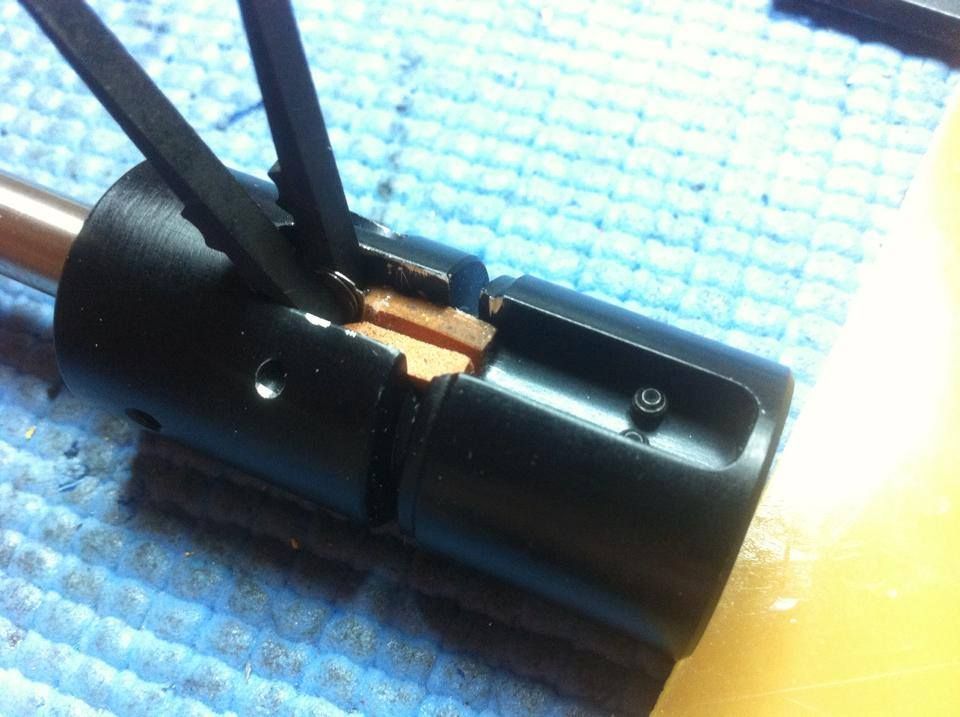 Despite what the manufacturer claims, I was only able to load about 21 bb's in the magazine with a speed-loader. The 100' Shooting Test (Outdoor) The Range When I approached Panther Airsoft (aka Panther Paintball) and told them about this review that I'm doing, they were more than accommodating and offered their range for me to do my tests. They genuinely expressed interest in the results of my review so that they may pass on the knowledge to their customers. With environmental concerns in mind, this field uses biodegradable bb's only and so my test subjects are limited to such.  This is the range I used. The are markers at predetermined distances from the shooting line, intended for airsofters to test their guns before a game. I paced out the 100' marker and it was reasonably accurate.  Each target is taped just under the 100' marker.  The Set-up The rifle is rested on some shooting sandbags and positioned so that it naturally rests while vaguely zero'ed on the target. Any minor adjustments were made by using the reaction hand to raise the stock. Hop-up was adjusted to give the most flat trajectory that I could get without over-hopping. Each target was given 2 full magazines.  Conditions Below were the weather conditions. As you can see, there is some reported wind and I certainly felt it.   I observed that the wind was intermittent. At times, it was just strong enough to move small vegetation. During each shot, I waited for the wind to stop at the target and at the shooter before committing. As a result, the test took a lot longer than necessary. I think I used about 3 hours to complete this test. However, I was unable to tell if there were wind gusts or wind in the bb's 100' flightpath. There wasn't enough vegetation or indicators for me to tell. It is for this reason that I do not value the results of this 100' test as much as the 50' indoor one, but I shared my results anyway because I feel it may reflect real-life situations. Heavy weights, after all, are supposed to resist wind better than lightweights and the wind is a very real enemy especially to an airsoft sniper.  The 50' Shooting Test (Indoor)  The Range To respect the privacy of the building owner, I am not at the liberty to disclose the actual location. I can say that it is a temperature-regulated warehouse environment. The target was roughly paced out at 50' for the purpose of the test. The Set-up Same as the set-up in the outdoor test, except this time I was in the prone position. The rifle was still supported by sandbags. The hop-up was dialed completely off, but the LRB spacer remained untouched. With the heavier weights, some hold-over (about 2" or so) was necessary. Each target was given 1 full magazine. Conditions  Nothing worth reporting except for the ceiling-mounted ventilation fan that was already mentioned in the Assumptions and Error section. The Rolling Test The purpose of this test is to determine the roundness of the bb by rolling it down a flat, smooth surface (mirror). A perfectly round object tends to deviate less from the centre-line. The mirror I used was about 50" long and was cleaned with window cleaner prior to testing.  A cut-off barrel was taped to the top of the mirror to serve as a guide. 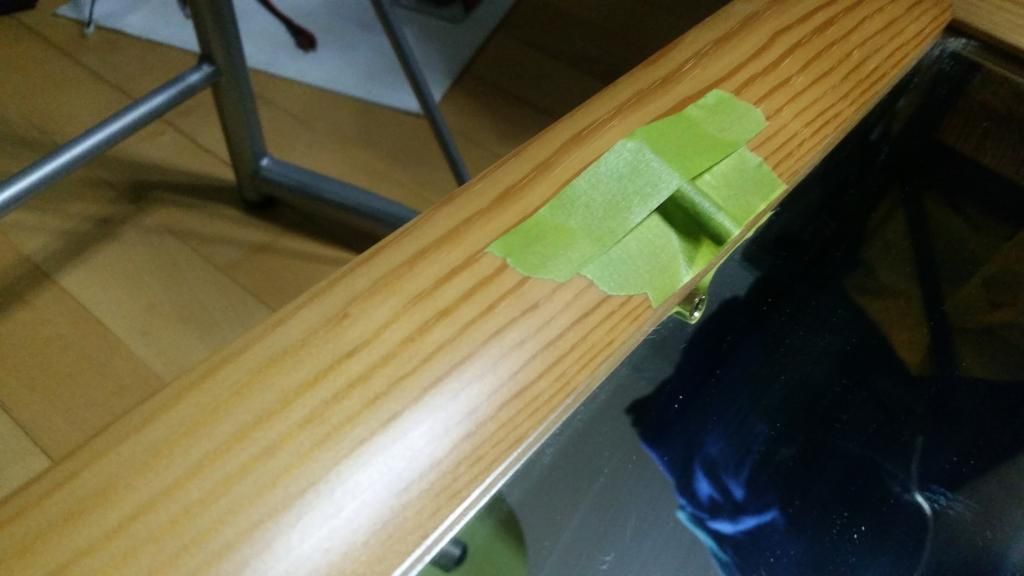 A measuring tape was secured at the bottom and an observer watches and record the initial impact after another helper releases a bb from the guide by gently lifting the bb into the guide.  The mirror was leveled horizontally and angled longitudinally at 4.0 degrees. Test Results How to read the results: NAME .## g (Brand and advertised weight of the bb tested) Avg. diameter: #.### mm (Average diameter of the sample of bb's tested. Measured with a micrometer.) STDEV.S of avg. diameter: #.###### mm (How much the average diameter deviates from bb to the next.) Avg. weight: #.### g (Average of the measured bb weight. The weights were measured with a jeweler's scale.) STDEV.S of weights: #.###### g (How much the weights deviate from one to another.) STDEV.S of CD: ##.# mm (How much the bb tends to deviate from the average centre-line in the rolling test.) Note: Plots are not to scale! Bioshot .28 g Avg. diameter: 5.921 mm STDEV.S of avg. diameter: .008567 mm Avg. weight: .277 g STDEV.S of weights: .001335 g STDEV.S of CD: 20.5 mm Shot at 50'  Shot at 100' (Ignore the typo)  Bioshot .30 g Avg. diameter: 5.932 mm STDEV.S of avg. diameter: .007753 Avg. weight: 0.297 g STDEV.S of weights: .001805 g STDEV.S of CD: 15.8 mm Shot at 50'  Shot at 50' (A newer batch given to me at a later date.)  Shot at 100'  KSC .30 g Avg. diameter: 5.902 mm STDEV.S of avg. diameter: .01785 mm Avg. weight: 0.285 g STDEV.S of weights: .003871 g STDEV.S of CD: 21.6 mm Shot at 50'  THESE ARE NOT BIODEGRADABLE. I only included these because I've been fond of these in the past and wanted to make a comparison. I was only able to perform the 50' shooting test due to the biodegradable requirement of the outdoor facility. Note the difference in actual weight and measured weight. Bioval .30 g Avg. diameter: 5.925 mm STDEV.S of avg. diameter: .005011 mm Avg. weight: 0.311 g STDEV.S of weights: .002200 g STDEV.S of CD: 18.2 mm Shot at 50' 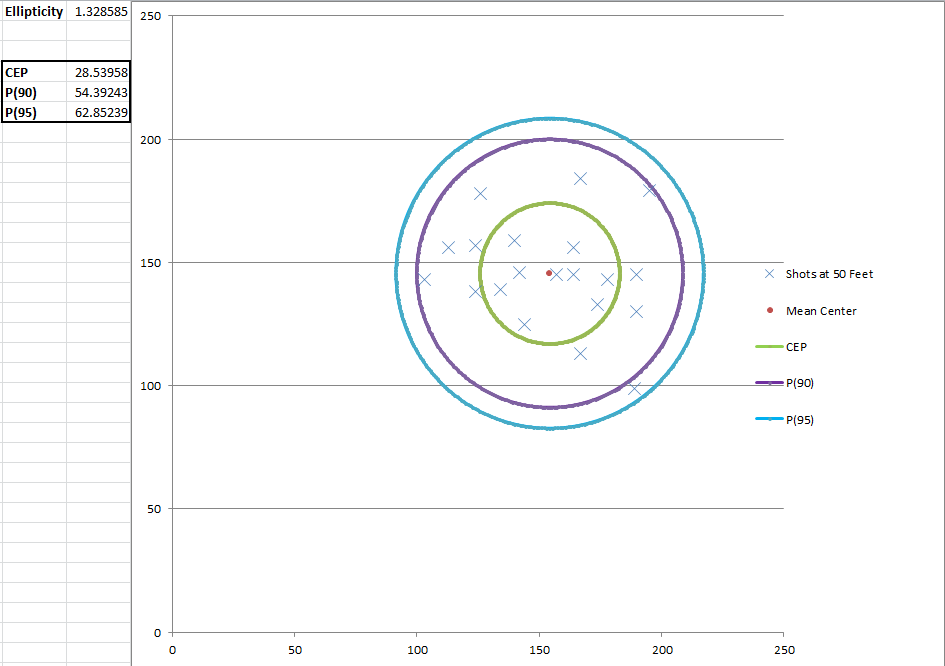 Shot at 100'  Note the difference between advertised and measured weight. Elite Force .32 g Avg. diameter: 5.938 mm STDEV.S of avg. diameter: .01604 mm Avg. weight: 0.313 g STDEV.S of weights: .003645 g STDEV.S of CD: 22.0 mm Shot at 50'  Shot at 100'  The average weight of these bb's were just a bit shy of .32 g. They were actually closer to 0.31 g. Bioshot .32 g Avg. diameter: 5.929 mm STDEV.S of avg. diameter: .005257 mm Avg. weight: 0.317 g STDEV.S of weights: .002845 g STDEV.S of CD: 26.7 mm Shot at 50'  Shot at 50' (New batch given to me at a later date.)  Shot at 100'  Bioshot .36 g Avg. diameter: 5.926 mm STDEV.S of avg. diameter: .003675 mm Avg. weight: 0.390 g STDEV.S of weights: .009086 g STDEV.S of CD: 26.9 mm Shot at 50'  Shot at 100' 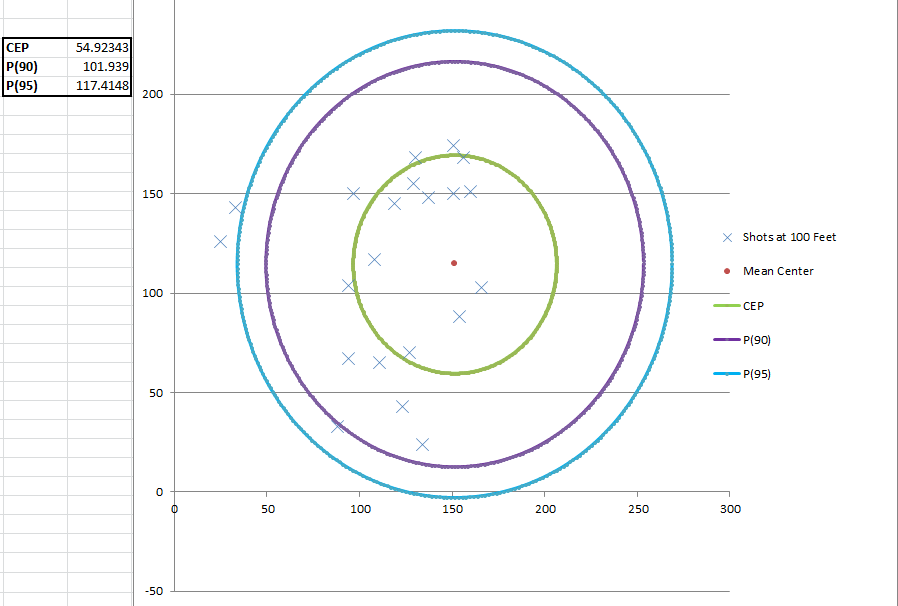 Surprisingly, these bb's were actually about .390 g on average. Bioshot .40 g Avg. diameter: 5.942 mm STDEV.S of avg. diameter: .004523 mm Avg. weight: 0.400 g STDEV.S of weights: .001521 g STDEV.S of CD: 42.5 mm Shot at 50'  Shot at 100'  Goldenball .40 g Avg. diameter: 5.917 mm STDEV.S of avg. diameter: .006862 mm Avg. weight: 0.375 g STDEV.S of weights: .001125 g STDEV.S of CD: 58.3 mm Shot at 50'  Shot at 100' 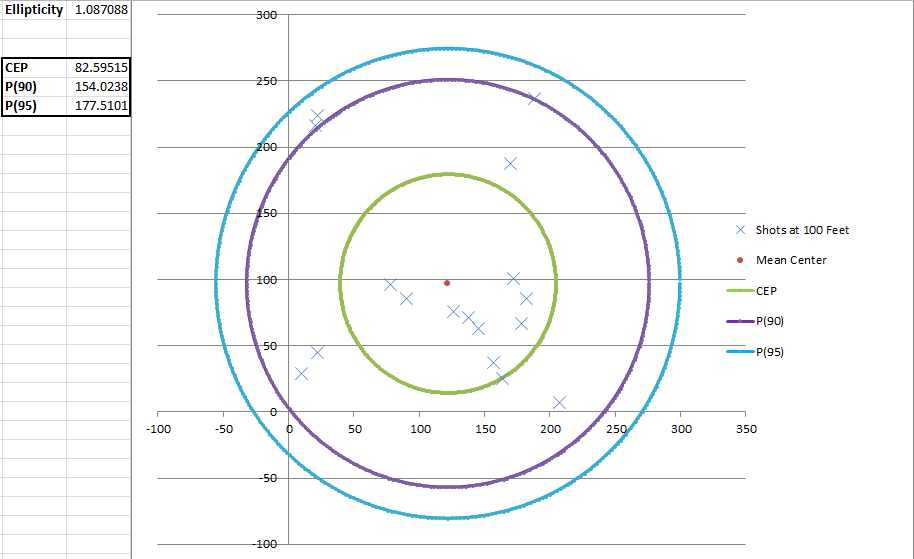 Loading this bb was troublesome. It was noticeably harder than the other weights and loading action was not smooth. Even more disturbing is the fact that these were advertised as ".40 g" when they are actually more like .37 - .38 g. Bioshot .43 g Avg. diameter: 5.949 mm STDEV.S of avg. diameter: .002557 mm Avg. weight: 0.418 g STDEV.S of weights: .001146 g STDEV.S of CD: 34.1 mm Shot at 50'  Shot at 100'  I ran into miss-feeding problems with this weight. The magazine was loaded fully and it had miss-fed about 1-2 times. I had to remove the mag, give it a good bang to dislodge the stuck bb. Loading with a speed-loader was difficult, too. Also note that these ".43 g" are in fact closer to .42 g. What Does This All Mean? The following charts are ranked in this order: 1. Most number of shots 2. Lowest P(95) 3. Lowest P(90) 4. Lowest CEP 5. Lowest STDEV.S of weight 6. Lowest STDEV.S of CD 7. Lowest STDEV.S of avg. diameters At 100'  Despite the Bioshot .43 g and Bioshot .28 g having the lowest CEP of the group by far, I cannot justify the validity of these measurements since they landed less than 20 shots. There just simply isn't enough data or perhaps too much data was lost (wind/error). For this reason, they are ranked very low. The top 5 bb's all actually had very similar results. CEP ranged from 54.9 to 59.6 in this group. Shot counts are somewhat decent, but Bioshot .36 g seems to come out on top with the most number of recorded hits, despite having a high weight deviation. This might be reflected with fluctuating fps. At 50'  Here, the shot counts between bb's were pretty close. I was not surprised that Goldenball scored so low due to numerous miss-feeds and poor overall CEP, but I was surprised to see Elite Force so low on the list. Again, this was due to the little number of hits. Even then, the CEP value was quite high. Note that both new batches of the Bioshot .32 g and .30 g behaved very similarly to the original batch. I wanted to take a step back and look at the greater picture for this group. Shot count was relatively close to each other, so I wondered what the ranking would look like had I ignored the number of shot counts for the top 10 on the list and see where CEP puts them.  It appears that there are a few lines of bb's that are consistently showing up on top of the list: Bioshot .32 g (CEP: 29.2 @ 50') Bioshot .30 g (CEP: 38.6 @ 50') Bioval . 30 g (CEP: 28.5 @ 50') Bioshot .36 g (CEP: 26.7 @ 50') Value Like with all things, money is always a consideration. While the hardcore enthusiasist will pay any dollar for that extra bit of performance, but for the majority of players, cost effectiveness is important, especially if these bb's are used outside of the sniper role. I gathered most of these prices online using Google search, referring to the original manufacturer whenever possible. The following chart has been arranged in the order of best buck per bb. Yes, I know Airsoftgi does sales for Bioval once in a while, and they are of great value when this happens, but for our purposes, I will consider their regular price.  Considering that the Bioshot .36 g are actually closer to .38 g, it's actually quite a deal Next, I arranged the chart by using CEP.  Looks like most of our top candidates ended up top again. Conclusion It is interesting to see how much difference there is between the advertised and actual weight of the bb. For me, this is an eye opener because I now need to rethink how I read my chrono. The industry standard is to compare muzzle velocities using .20 g bb's or at least the muzzle energy equivalent of .20 g bb's. If I were to compare muzzle velocity (energies) using the advertised weight, my calculations would actually be slightly off. In extreme cases, it may even cause someone to inadvertently cheat. It's difficult to try and make sense of all this because there is so much data and so many ways of interpreting it, but all seems to indicate that Bioshot .30, .32, and .36 (more like .39) are high quality ammo. My expectation and hopes going into this review were to find that the new heavy .40 and .43 were the superior bb, but the numbers don't seem to say so. Aside from that, the feeding issue is a bit of a nuisance. Perhaps, if I improve the efficiency of the magazine feeding, I might be able to use the .40 and .43 properly. Since I had difficulty loading them, I wonder if the speed-loader had cause some sort of damage to them to cause these results. I can't discount the possibility that there may be something wrong with the data or the gun that caused those bb's to score so low, but I'm a believer of what I see and practicality. My suggestion is to take this review as a supplement in making your own decision with which bb to use and experiment in the field. I can throw all sorts of numbers around but in the end, it's getting the hit that counts. I wish to thank John again for giving me this opportunity to do the review and for being patience while I prepare this write-up.
__________________
What kind of airsofter are YOU? Last edited by KenTsui; September 24th, 2014 at 19:43.. |
|
|
|

|
|
|
#2 |
|
Not Eye Safe, Pretty Boy Maximus on the field take his picture!
|
Fantastic writeup. Basically we should all be using bioshot .28s, since they're somehow better in testing than the .30s lol
Don't worry about weight deviation chronoing with .20s, since potential joule creep will generate far greater errors than slight weight deviation ever will. |
|
|

|
|
|
#3 |
|
"bb bukakke" KING!
|
what was the reasoning for the separate batches of .3s and .32 bioshots? Did you take the physical measurements of the 2 batches?
lots of data to go through later when I have the time... My experience with bioshot .28s and .3s says the .28s outperforms the .3s mainly from feeding issues in AEGs with the .3s, but the flight paths are very similar and you get more rounds per bag which makes up for the slight decrease in accuracy.
__________________
I futz with V2s, V3s and V6s. I could be wrong... but probably, most likely not, as far as I know. |
|
|

|
|
|
#4 | |
|
Quote:
The performance seem to be very similar between the new and old batch, so I decided to forgo the measurements in the interest of saving time. I may eventually get to it and update the charts.
__________________
What kind of airsofter are YOU? |
||
|
|

|
|
|
#5 |
|
"bb bukakke" KING!
|
might have been a result of a report from me about the newer .32s from a recent restock being undersized. I have 3 bags of .32s at the moment that aren't feeding well compared to at least 12 bags I've gone through in the past without issue.
I have a workaround to get them to feed but, I never had a chance to measure the ones that I had that were fine. I had rounds on the unfeeding batch as small as 5.89/90, The workaround was that if I start the mag with 10-15 rounds of good ammo (in my case green devil .3s) anything loaded on top would feed and function just fine. If I didn't start the mag with other BBs, the first 2 loaded would jam between the follower and the side of the mag tube. Several times in testing and once on the field I had to take the entire mag apart to get the rounds out. Still, I had so many bags before without issue so I'll be sticking with the .32s in the future. 10-15 rounds of something else at the bottom of the mag is not a huge deal.
__________________
I futz with V2s, V3s and V6s. I could be wrong... but probably, most likely not, as far as I know. Last edited by lurkingknight; September 24th, 2014 at 19:20.. |
|
|

|
|
|
#6 |
|
"I'm not a math major or expert" Well you could have fooled me, although this was very scientific and thorough. The information was really informative. Thanks for this
|
|
|
|

|
|
|
#7 |
|
formerly steyr
|
SCiENCE BONER!!!!!!
|
|
|

|
|
|
#8 |
|
Mr. Silencer
|
The difference between the batches was simply when they were sourced. The second batch was sourced half a year later than the first batch. I sent both to Ken with hopes to check consistency of the product.
Lurking: the second batch Ken tested was the one you had trouble with. Let me know when you receive your latest order and check out those bags. Same batch but different case. John |
|
|

|
|
|
#9 |
|
formerly steyr
|
So when can we expect stock, Stealth?
|
|
|

|
|
|
#10 |
|
I'm interested as well. I'll probably be picking up some .36's, and maybe some .4x's and give them another chance. :wink:
__________________
What kind of airsofter are YOU? |
|
|
|

|
|
|
#11 |
|
I love your comparison. I just wish you could have done it with more brands like GG bio but I get this was to test the heavyweight.
I've conducted limited test mainly using BB weight consistency to select BB brand between GG, king arms, local housebrand and elite force. In the batches I had G&G .28 to be the closest to the advertised weight with 0.2815g. King arms was very disapointing is those test with .88% SD in weight. Last edited by Comeau-SCS; September 24th, 2014 at 22:26.. |
|
|
|

|
|
|
#12 | |
|
"bb bukakke" KING!
|
Quote:
__________________
I futz with V2s, V3s and V6s. I could be wrong... but probably, most likely not, as far as I know. |
|
|
|

|
|
|
#13 |
|
"bb bukakke" KING!
|
back from a game. Opened a fresh bag stealth sent to me.
Same feeding issues. Hard jams inside the mag, I got one mag I have to take apart at the moment, they're jammed so hard. Naked, I primed with about 15-20 rounds of .3 green devils before topping the mag with the .32s from bioshot. They fed better, but still not consistently. Not until I dropped silicone oil into the bag and mixed it in did the BBs start feeding with the primer rounds to isolate the follower from the bioshots. They'll shoot with reduced hop due to the oil on the BBs fouling my R-hop. That's rather disappointing. I was so happy with the rounds before when they worked. They also had issues feeding naked and oiled in my mp5 mags. Oiled they would sort of work. I spent the entire morning trying to get them to work, only when I oiled them as a last resort did they start feeding, but it's a bit ill advised since it will foul your hop or reduce it at best.
__________________
I futz with V2s, V3s and V6s. I could be wrong... but probably, most likely not, as far as I know. |
|
|

|
|
|
#14 |
|
Not Eye Safe, Pretty Boy Maximus on the field take his picture!
|
If you need oil to get something to feed. Something is horribly wrong and oil is not the proper course of action
|
|
|

|
|
|
#15 |
|
"bb bukakke" KING!
|
hence why I said: last resort.
__________________
I futz with V2s, V3s and V6s. I could be wrong... but probably, most likely not, as far as I know. |
|
|

|
  |
|
||||||
| Bookmarks |
|
|
 |